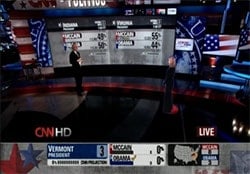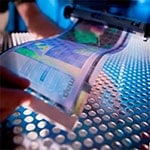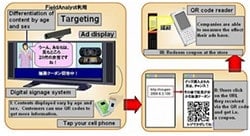Directed by Steven Spielberg, the movie Minority Report takes a leap into the future and shows us some fancy technological innovation
The future-predicting technology that drives the premise of the sci-fi blockbuster Minority Report is silly at best.
And when the film hit theaters in 2002, the gadgets seemed pretty unrealistic, too. But eerily enough the slew of dreamed-up gizmos shown off throughout John Anderton’s daring escape are hardening into reality.
No, our government hasn’t yet imprisoned a group of nude psychics to combat crime. But some of the latest over-the-top gadgets are making director Steven Spielberg and writer Philip Dick appear to be fortunetellers themselves — of the technology world, at least. Here’s some disturbing, or just plain cool, tech teased in the movie that’ll be hitting home in one form or another.
Gesture-based Computer Interfaces
A visually awesome, albeit seemingly impractical piece of tech that the film highlights is the 3-D-hologram computer interface that Anderton controls with graceful hand gestures. Mgestyk Technologies is playing off the same idea with its gesture-based interface, which consists of a 3-D camera and software that translates hand movements into commands to control computer applications and games. From looking at the demo video, the interface appears to be a bit laggy, but progress is progress.
 Flexible Displays
Flexible Displays
Spielberg and Dick clearly aren’t optimistic about the future of print, because in Report the medium is entirely replaced with thin, flexible electronic displays. Even better, the displays automatically update with the latest news articles, presumably from futuristic RSS feeds. Thanks to the United States’ tendency to dump billions of dollars into military funding, we’ll see a gadget just like that in about three years. Composed of specialty polymer and thin stainless-steel substrates, the screens will display characters with the electrophoretic ink (E-Ink) technology seen on today’s e-book readers (e.g, the Amazon Kindle). Hopefully by then E-Ink will achieve color.
 3-D Holograms
3-D Holograms
Probably the cheesiest scene in Report is the one where Anderton is watching a home video of his wife and pre-kidnapped son. But more interestingly, the video is projected as a 3-D hologram, making it appear as if his wife and son are standing right in front of him. CNN tried to recreate that effect with its recent election coverage. Granted, the anchors and reporters being videotaped weren’t actually looking at holograms. Instead, they were looking at monitors, and CNN used 44 small, fixed cameras and 20 computers to insert virtual holograms with real-time effects processing. Fake holograms! Wait, that’s kind of redundant, isn’t it?
 Identity-Detecting Advertisement Cameras
Identity-Detecting Advertisement Cameras
Surely you recall the scene in Report when Anderton is trying to run from the PoPo — but cameras keep scanning his eyeballs, only to play targeted advertisements based on his identity. A new display from NEC is creepily similar. Announced in July and premiering in Japan, NEC’s display utilizes a miniature camera to detect a person’s age and sex so it can play specific commercials aimed at a shopper’s demographic. Don’t get a black-market surgeon to remove your eyeballs just yet: Playing ads on a TV isn’t nearly as invasive as the ubiquitous holograms in Report. But it’s the same intrusive, identity-probing idea.
